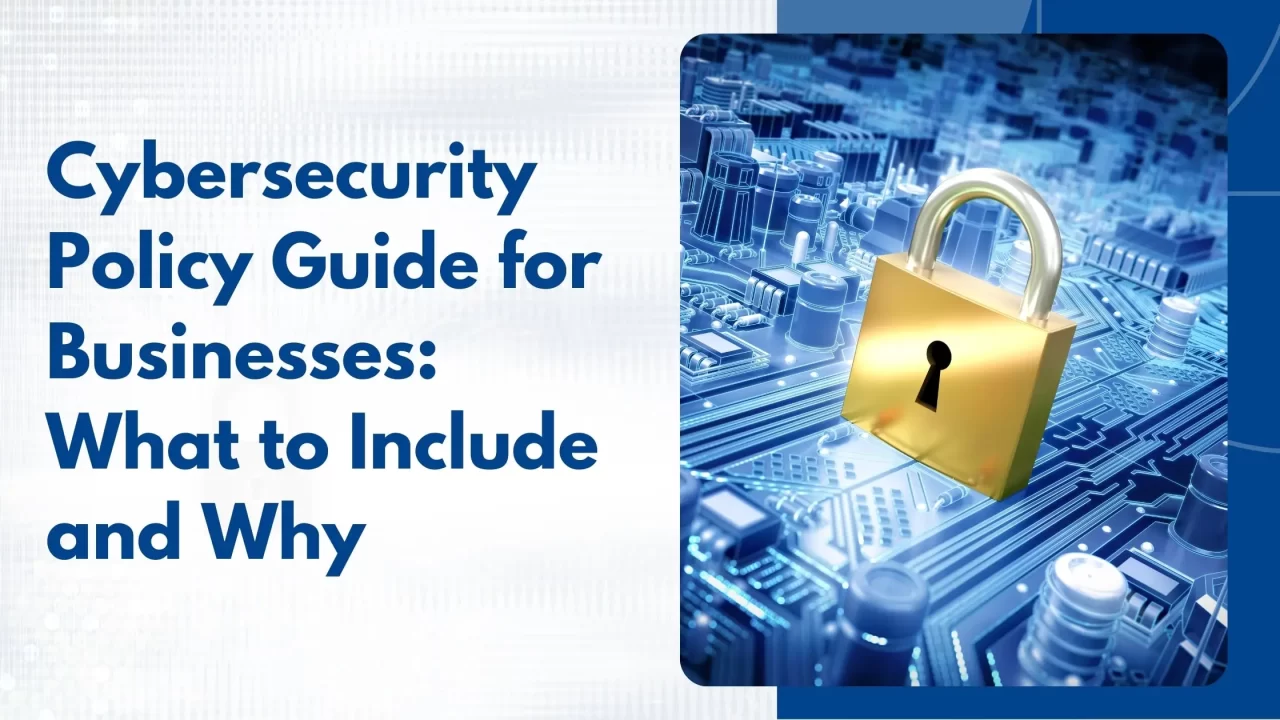In an age of digital transformation and rising cyber threats, a cybersecurity policy is not a luxury—it’s a necessity. For Indian businesses navigating hybrid work, growing regulatory scrutiny, and increasing cyberattacks, a robust cybersecurity policy acts as a formal line of defense.
This blog explains what a cybersecurity policy is, why your organization needs one, and what essential components it must include to ensure both protection and compliance.
What Is a Cybersecurity Policy?
A cybersecurity policy is a documented set of rules, guidelines, and procedures that governs how an organization manages, protects, and responds to cyber risks. It provides clarity on roles, responsibilities, and acceptable behaviors related to data, systems, and technology use.
A well-defined policy helps:
- Safeguard sensitive data
- Prevent unauthorized access or breaches
- Standardize incident response procedures
- Ensure compliance with regulations like ISO 27001 or DPDPA
- Educate employees on their responsibilities
Why Indian Businesses Need One Now More Than Ever
1. Rising Threat Landscape
Indian businesses—from SMBs to large enterprises—are witnessing an uptick in phishing, ransomware, and supply chain attacks. A cybersecurity policy helps mitigate these risks.
2. Regulatory Pressure
India’s Digital Personal Data Protection Act (DPDPA), CERT-In directives, and sector-specific guidelines make a formal policy mandatory for many organizations.
3. Growing Use of Cloud & BYOD
With remote work and cloud adoption, device and data exposure has increased. A cybersecurity policy is critical to govern access, usage, and control.
4. Client and Partner Expectations
Many global clients demand proof of information security governance before signing contracts.
Key Elements to Include in a Cybersecurity Policy
1. Acceptable Use Policy
Define how employees may use company devices, networks, internet, email, and software. Clearly outline prohibitions like accessing suspicious websites or installing unauthorized apps.
2. Access Control
Specify how access to data and systems is granted based on roles (RBAC), and mandate the use of strong passwords and multi-factor authentication (MFA).
3. Data Protection & Privacy
Lay out how customer and employee data is stored, encrypted, and transmitted securely. Highlight adherence to DPDPA and internal privacy standards.
4. Device & Endpoint Security
Define policies for securing laptops, mobile phones, USB devices, and personal devices (BYOD). Ensure they fall under the purview of your Endpoint Security Management.
5. Incident Response
Describe procedures for identifying, reporting, containing, and recovering from cyber incidents. Include contact points, response timelines, and reporting templates.
6. Third-Party Risk Management
Include guidelines for evaluating vendors, securing data exchanges, and managing third-party access.
7. Employee Training & Awareness
Make training on phishing, password hygiene, and secure practices mandatory. Include policies on training frequency and formats.
8. Compliance & Audit Requirements
Mention internal audits, reporting obligations to authorities (CERT-In), and controls for maintaining ISO 27001 or similar certifications.
9. Policy Review & Update Schedule
Security risks evolve. Define how often the policy will be reviewed and who is responsible for updates.
Best Practices for Drafting and Implementing a Cybersecurity Policy
- Tailor the policy to your business size and industry. Don’t copy-paste templates.
- Involve IT, HR, legal, and operations. Cybersecurity is a shared responsibility.
- Communicate clearly. Avoid technical jargon and legalese.
- Make it accessible. Host the policy in a shared repository with version control.
- Get buy-in from leadership. Top-down support is crucial for implementation.
How Vanaps Supports Cybersecurity Governance
At Vanaps, we help businesses:
- Draft custom cybersecurity policies
- Conduct security gap assessments
- Align policies with frameworks like ISO 27001, DPDPA, and NIST
- Deploy enforcement tools through Endpoint Security and CNAAP
Whether you’re starting from scratch or refining an old document, our experts provide practical, regulation-aligned guidance tailored to Indian businesses.
Conclusion
A cybersecurity policy isn’t just documentation—it’s your organization’s playbook for digital defense. In today’s environment, having a policy in place is not only a best practice but often a legal requirement.
Not sure where to begin or if your current policy is up to standard? Book a free consultation with our cybersecurity experts to get started today.



